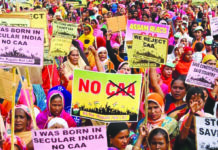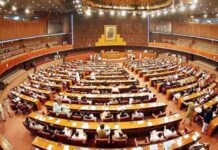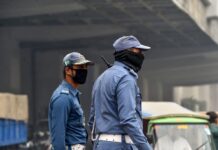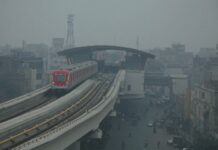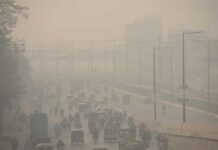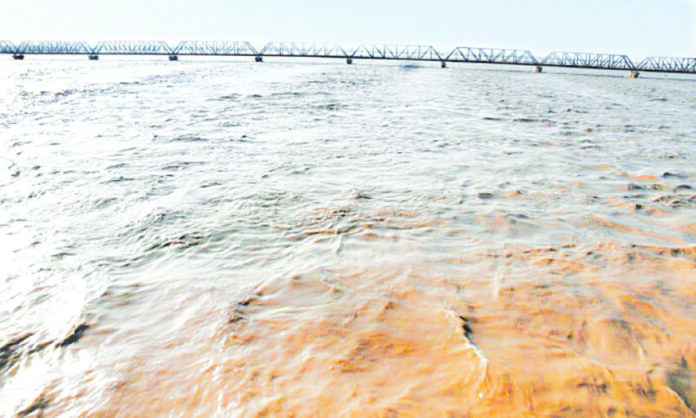Pakistan’s water crisis is no longer a distant threat; it is an unfolding reality, glaring in the face of a nation that seems unprepared, unwilling, or unable to confront it. Every monsoon season, millions of cusecs of freshwater pass through the Kotri and Sukkur barrages, only to be drained into the Arabian Sea. The numbers are staggering. In just the first 51 days of this year’s monsoon (July 1 to August 20), more than 9 million acre-feet of clean water has been lost. This is equivalent to Pakistan’s entire national water storage capacity. Projections indicate that another 4 to 5 MAF could be lost in the coming days, bringing the total wastage dangerously beyond 14 MAF. The tragedy is not just in the loss of water but in the immense opportunities that slip away with it- opportunities to feed our people, expand cultivation, strengthen the economy, and protect our ecosystems.
The data from Kotri barrage speaks louder than political rhetoric. On August 9, 171,846 cusecs of water were recorded flowing downstream. Just nine days later, on August 18, this figure plunged to 71,227 cusecs, only to rise again to 113,717 cusecs on August 20. By August 19, the outflow had dropped to 81,088 cusecs. Such erratic fluctuations highlight the volatility of the Indus water system and the lack of mechanisms to regulate it. Water that could have been stored and used strategically to irrigate crops or recharge reservoirs, is rushed away unchecked, leaving both farmers and the delta in distress.
The human and ecological consequences of this negligence are immense. The Indus Delta, that sustains mangroves, agriculture, and fisheries, requires a minimum flow of 5000 cusecs to survive. Mangrove forests, already under immense pressure, continue to vanish, and farmers who once thrived on rich delta soil find themselves pushed into poverty. The crisis is not abstrac – it is lived by millions. Each wasted drop is a stolen chance for survival.
What makes the crisis even more painful is that the numbers are not hidden. They are publicly available, flashing across charts and daily updates. Every citizen can see how much water has flowed out, how much has been wasted, and how much could have been saved. Yet, the debate on water remains hostage to politics, rhetoric, and inaction.
Tarbela, Mangla, Rawal, Khanpur, Simly, and Hub dams together can hold just 13.68 MAF of water, barely enough for a month’s needs. Yet in July and August alone, 14 MAF is expected to be lost downstream to the sea. Even if our dams are filled to capacity, Pakistan cannot save as much water as it wastes in just two months. By contrast, India can store 170 days of water and the USA nearly 900. Pakistan, with its river-fed plains and vast agricultural base, survives on a meagre 30 days. This is not a shortfall- it is an existential threat. The agricultural opportunity cost is colossal. Pakistan has 76.43 million acres of arable land, of which 59.70 million acres are under cultivation, leaving more than 20 million acres idle. With just 1 MAF of conserved water, 877,000 acres can be irrigated. Saving the entire 14 MAF currently lost could bring 12.2 million acres of wasteland under cultivation. Each MAF lost, therefore, costs Pakistan nearly a billion dollars in agricultural wealth.
The solution is not hidden in abstract plans; it is tangible and technical. Pakistan needs to build around 170 small dams, each comparable in size to Kurram Tangi Dam with a capacity of 0.084 MAF. This is not simply about storage; it is about national survival. Dams generate hydroelectricity, feed industries, and secure food supply chains. And yet, while consensus exists among experts, political bickering continues to paralyze decision-making. The visuals of Kotri’s outflows in August, swinging wildly between abundance and scarcity, are a metaphor for Pakistan’s larger mismanagement – an abundance of water in moments of flood, and desperate scarcity in times of drought.
What makes the crisis even more painful is that the numbers are not hidden. They are publicly available, flashing across charts and daily updates. Every citizen can see how much water has flowed out, how much has been wasted, and how much could have been saved. Yet, the debate on water remains hostage to politics, rhetoric, and inaction. People ask: where did the water go? Who used it, who wasted it, and who denied the rights of the communities living downstream? These are not just technical questions but moral ones, because in every drop wasted lies a family’s lost harvest, a farmer’s debt, a child’s malnutrition, and a nation’s shrinking prosperity. Dams are equivalent to survival, economy, and progress. Without it, Pakistan is destined to remain a nation adrift, rich in rivers but poor in planning.


